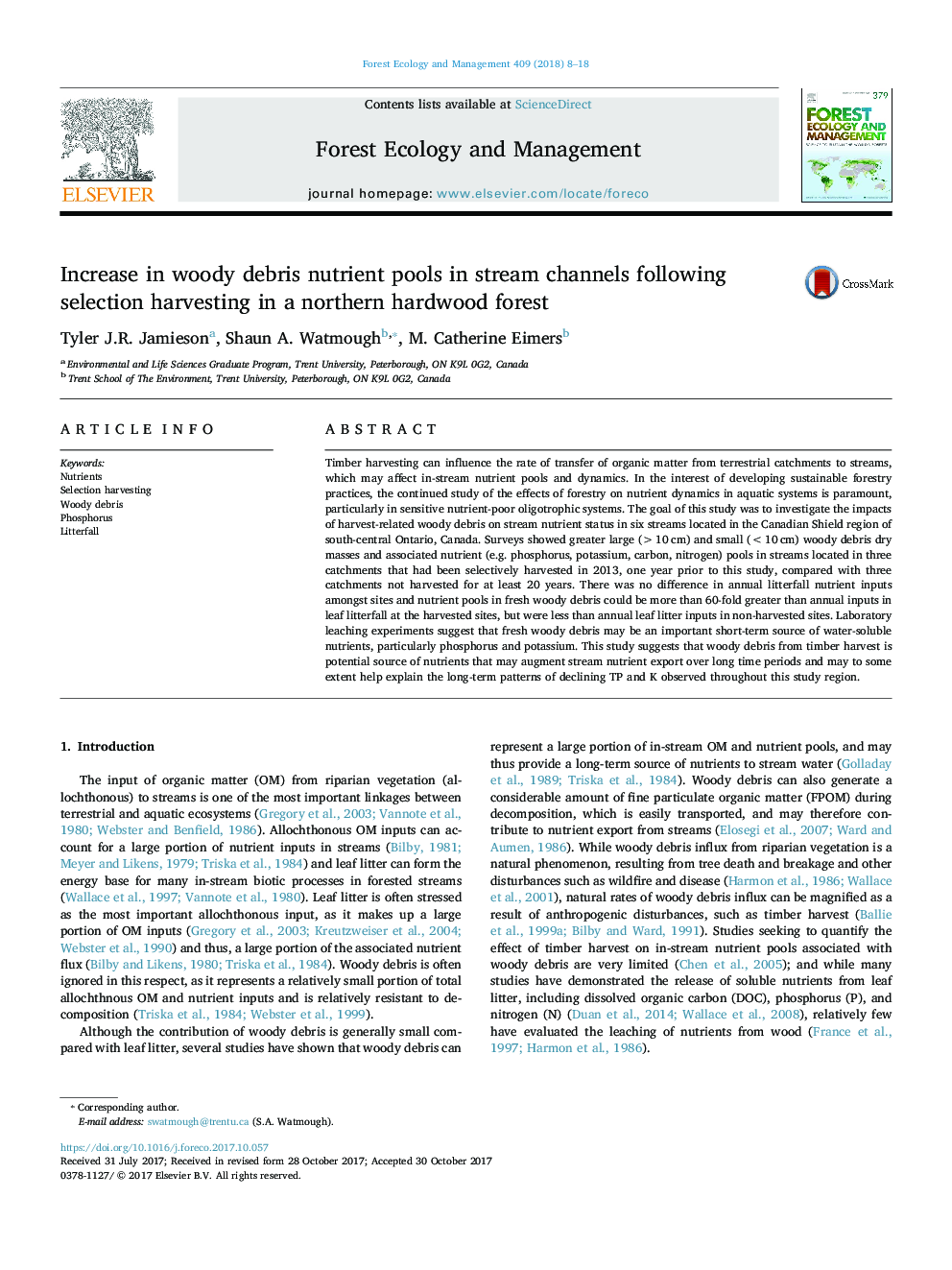| Article ID | Journal | Published Year | Pages | File Type |
|---|---|---|---|---|
| 6541862 | Forest Ecology and Management | 2018 | 11 Pages |
Abstract
Timber harvesting can influence the rate of transfer of organic matter from terrestrial catchments to streams, which may affect in-stream nutrient pools and dynamics. In the interest of developing sustainable forestry practices, the continued study of the effects of forestry on nutrient dynamics in aquatic systems is paramount, particularly in sensitive nutrient-poor oligotrophic systems. The goal of this study was to investigate the impacts of harvest-related woody debris on stream nutrient status in six streams located in the Canadian Shield region of south-central Ontario, Canada. Surveys showed greater large (>10â¯cm) and small (<10â¯cm) woody debris dry masses and associated nutrient (e.g. phosphorus, potassium, carbon, nitrogen) pools in streams located in three catchments that had been selectively harvested in 2013, one year prior to this study, compared with three catchments not harvested for at least 20 years. There was no difference in annual litterfall nutrient inputs amongst sites and nutrient pools in fresh woody debris could be more than 60-fold greater than annual inputs in leaf litterfall at the harvested sites, but were less than annual leaf litter inputs in non-harvested sites. Laboratory leaching experiments suggest that fresh woody debris may be an important short-term source of water-soluble nutrients, particularly phosphorus and potassium. This study suggests that woody debris from timber harvest is potential source of nutrients that may augment stream nutrient export over long time periods and may to some extent help explain the long-term patterns of declining TP and K observed throughout this study region.
Related Topics
Life Sciences
Agricultural and Biological Sciences
Ecology, Evolution, Behavior and Systematics
Authors
Tyler J.R. Jamieson, Shaun A. Watmough, M. Catherine Eimers,
